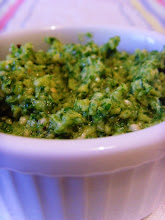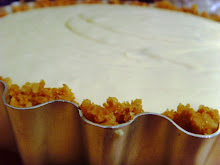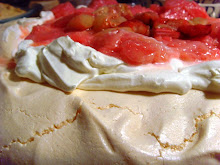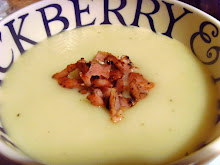Since we have moved, we have been eating rather a lot of fish. This comes as something of a surprise seeing as we are nowhere near the sea. It is usually when I am by the sea that I get an increased urge to cook fish. Up until recently, we've cooked and eaten fish on a regular basis but I have to confess that my repertoire of fish recipes is embarrassingly slim. I make a mean fish pie. My fishcakes are pretty good too and come in a variety of guises from the very tasty smoked mackerel fish cakes to the more traditional white fish and parsley variety. Cod and salmon fillets are bought and cooked regularly whether in an Italian-inspired sauce or with a more Oriental twist. However, I tend to stick to the basics. I'm not overly adventurous when it comes to the type of fish that I cook. I'm stuck on those old favourites even though I know they may not always be the most sustainable of species.
I have to confess to one of my culinary fears. Fear of the fish counter. I kid you not.
Indeed, it is with a mix of fear and excitement that I approach the fish counter in the local fishmonger or supermarket. I feel all brave and think I'll see what looks good and choose something a little... out of my comfort zone. But then, just as the red mullet looks me in the eye, I hear myself saying 'a couple of salmon fillets please'. Oh the shame...
But all this has changed. Well... slightly. Deciding that I needed to put an end to this fishy nonsense, I requested (and received) a fishy cookery book for my birthday. I wanted one not only with recipes, but also one that educated me on the creatures that lurk beneath the waves. The book I received is Mitch Tonks' book which is imaginatively entitled 'Fish'. It is exactly the sort of book I'd been looking for. A page is dedicated to each fish detailing the flavour profile of the fish, its habitat, what time of year it is at its best and other such interesting facts. Not too much information - just enough. Mitch then gives two or three recipes for each one. The recipes are really varied - a mix of the classics and some more daring suggestions like the fabulous-looking mackerel tagine. The photos are inspiring and I love all the extra information of the fishing industry, including mini interviews with various fishermen. Interesting as well as useful. The only criticism I have is that there are some potentially 'important' fish missing from the book: trout and plaice to name a couple.
Enough of a sales pitch though. This book certainly got me inspired and feeling brave enough to walk boldly into my new fishmonger and face his fish counter head on. And what a helpful fishmonger he was - plenty of advice and hand-holding later and I walked out clutching a parcel of gilthead bream. I cooked it up later that evening following ideas I'd gleaned from the new book and was extremely pleased with the result.
Feeling highly successful, I then decided that we needed to christen our new fish kettle which we received as a wedding present. Our area is well-known for the local trout - the rivers are teaming with them. I adore trout and purchased two of the shiny beauties. We stuffed their bellies with soft herbs and then let them steam away happily for around 20 minutes. They were cooked to perfection and we felt virtuous having prepared such a healthy supper. So successful that we repeated this meal at the weekend. This time though, my husband also picked up a couple of large sardines (pilchards??) at the same time, planning to serve them as a starter.
I 'fished' around on the internet (oh the wit!) trying to find a suitable recipe using ingredients we had to hand and knowing that these little fish could handle strong flavours. I've usually eaten them when they've been cooked on the barbecue and we were debating griddling them when I found this simple recipe from Gordon Ramsay. We adapted it slightly and were impressed with the extremely tasty results.
Roasted sardines on toast
Ingredients (per person):
1 large sardine (or a couple of smaller ones), as fresh as can be
handful of cherry tomatoes
sprig of rosemary
clove of garlic
bread - we used baguette, Gordon used ciabatta but any crusty bread would be nice
olive oil
1. Pre-heat the oven to 200C. Scale the sardines by running them under a cold tap and rubbing slightly with your fingers. Gut sardines if desired (we did as they were rather large).
2. Put sardines and tomatoes in a roasting tin, season well with salt and pepper, drizzle over a good splodge of olive oil and then scatter rosemary on top.
3. Roast in oven for 10 minutes until sardines are cooked and skin is crisp.
4. Meanwhile, heat a griddle pan until smoking. Slice bread into thick slice/s. Cut garlic clove in half and rub over both sides of bread. Drizzle with olive oil and toast in the pan on both sides until ever-so-slightly charred.
5. Cut the heads of the sardines and lay sardine/s on top of the toast with the tomatoes. Drizzle with the juices from the roasting tin.


















































